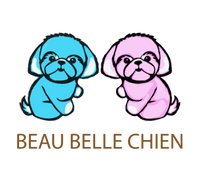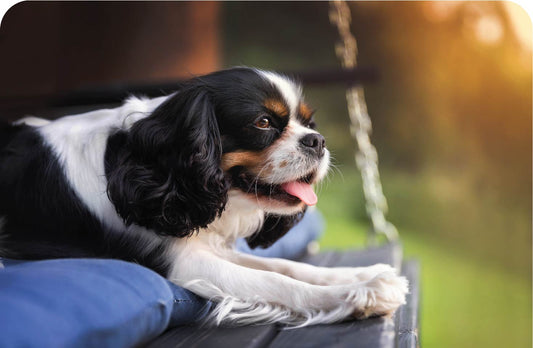As a dog owner, it is important to be aware of the dog's fur, as a groomed coat provides a much better well-being for your dog. However, it can be a bit of a jungle to find head and tail in what tools you need when it comes to fur care, it obviously depends on what fur your dog has, but it can easily be kept simple and easy. As a minimum, all dogs, regardless of coat type, benefit from a walk with the brush once or twice a week as well as a bath every now and then.
The Different Types of Fur
If you have a dog with short fur such as Labrador, French Bulldog, Chicken Dog, etc., it is enough to brush the fur thoroughly through once or twice a week. However, it is also about where the dog lives and moves, if for example it is a city dog that primarily walks on asphalt and gravel paths, the coat will be less dirty than if the dog comes into the woods every day.
If you have a dog with medium-long coat, it is important to brush it through several times a week. If the coat is not brushed, it will filter and knots can form, which in the worst case can be extremely painful for the dog and which must eventually be shaved off. These knots most often occur under the forelegs in the armpits, in the groin and on the neck where the collar sits, ie where there is the most friction and movement, which also means that the dog will be in pain when it moves if the knots become too large. Therefore, be extra thorough with these areas when brushing the coat.
If you own a dog with curls such as a Poodle, Doodle or a Truffle Dog, it is important that you make an appointment with a professional dog trimmer, as this type of fur should preferably be trimmed 1-4 times a year. The number depends a lot on the individual dog's coat, which may differ from dog to dog of the same breed, but is also about how much the dog is outside / inside. The coat grows in step with the temperature and the surroundings so that dogs that are very outside, for example dogs who live on farms, often have a thicker coat than dogs who live in urban areas and are therefore inside most of the day.
My Dog Hates being Brushed
It is important to get your dog used to being brushed off when it is a puppy. Therefore, start by stroking the puppy over the back with a soft brush while it is rewarded with treats, a few times is enough. This can advantageously be done a couple of times a week, even if the puppy's fur is completely fine and clean, that way the puppy will quickly get used to the brush. As you practice this, you can also introduce the brush on other parts of the body, such as the neck, under the stomach, etc. Remember to be patient with such a small new puppy.
What Brushes Do I Need?
Always make sure you get some tools of good quality. Bad brushes can have the opposite effect and in the long run result in a damaged coat. Always choose a soft brush made from natural materials such as wild boar hair. In addition, a good map is also important as it goes in depth down to the undercoat. Never choose a completely hard card, as this can cause the dog pain if the undercoat filters a lot, and always be careful when using it. If your dog has a short coat, a massage brush can be an added luxury for the dog as it massages the dog while removing loose hair. Such a one is therefore not intended for long coat, as it is used in circular motions and therefore will filter the long coat. In addition to these two or three tools, you actually do not need more, the fur care can therefore easily be kept simple with a good soft brush and a map.
How Often Should the Dog Take a Bath?
In principle, dogs can easily tolerate taking a bath at regular intervals. However, this is also about where the dog moves and how it behaves. Is it a lot in the woods and loves to roll in mud and what's worse, or is it primarily inside urban areas and bypasses even the slightest puddle? This of course varies from dog to dog, but there is no rule on how often the dog may be bathed. Remember that this must also be accustomed from puppy time, so it can easily pay to bathe your puppy regularly until he has got used to it. If you have an allergy dog, it may be an idea to talk to the vet about which shampoo to use and how often a bath is recommended.
What Shampoo and Conditioner Should I Use?
Always choose a shampoo and conditioner of the highest quality, which is made from pure and natural ingredients. In addition, it is important to choose products for your particular dog, as not all dogs are the same. It may be that your dog has a dry and itchy skin and coat and therefore needs a shampoo specifically for this, or for the puppy where an extra sensitive puppy shampoo is recommended. There are various products on the market nowadays.



